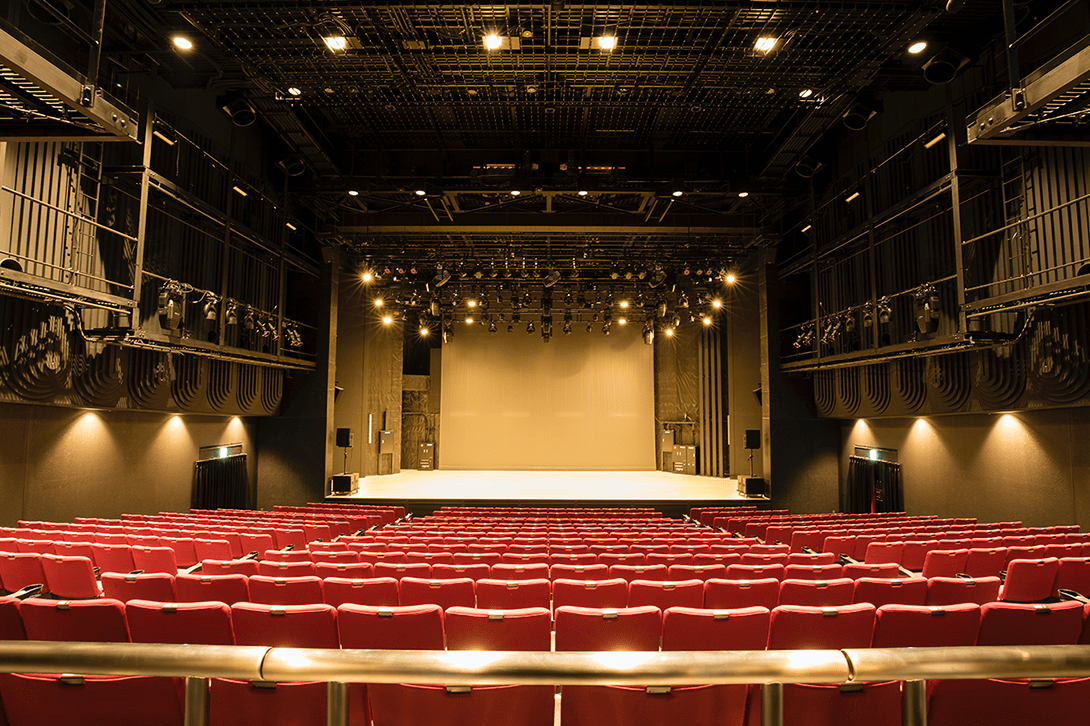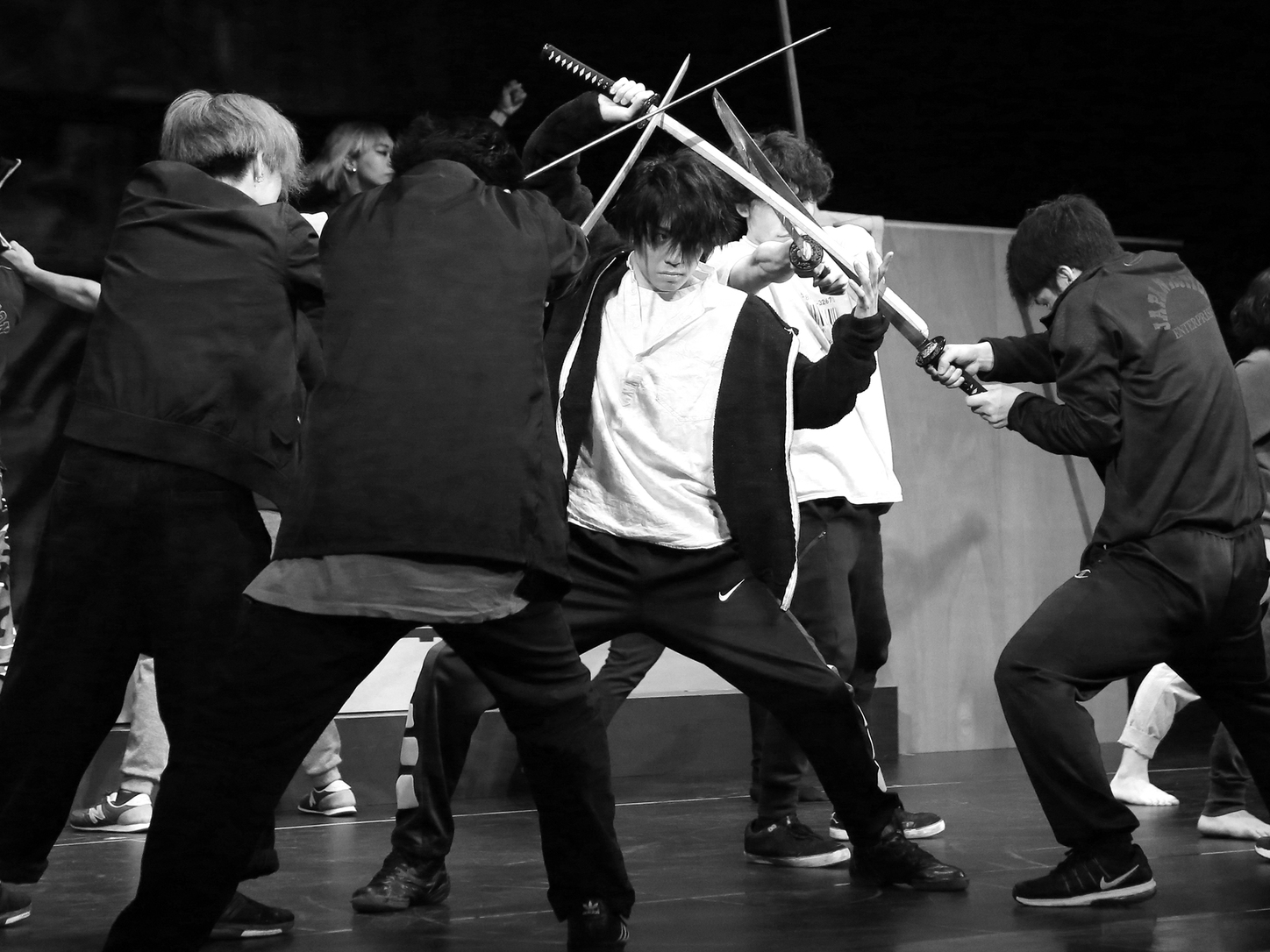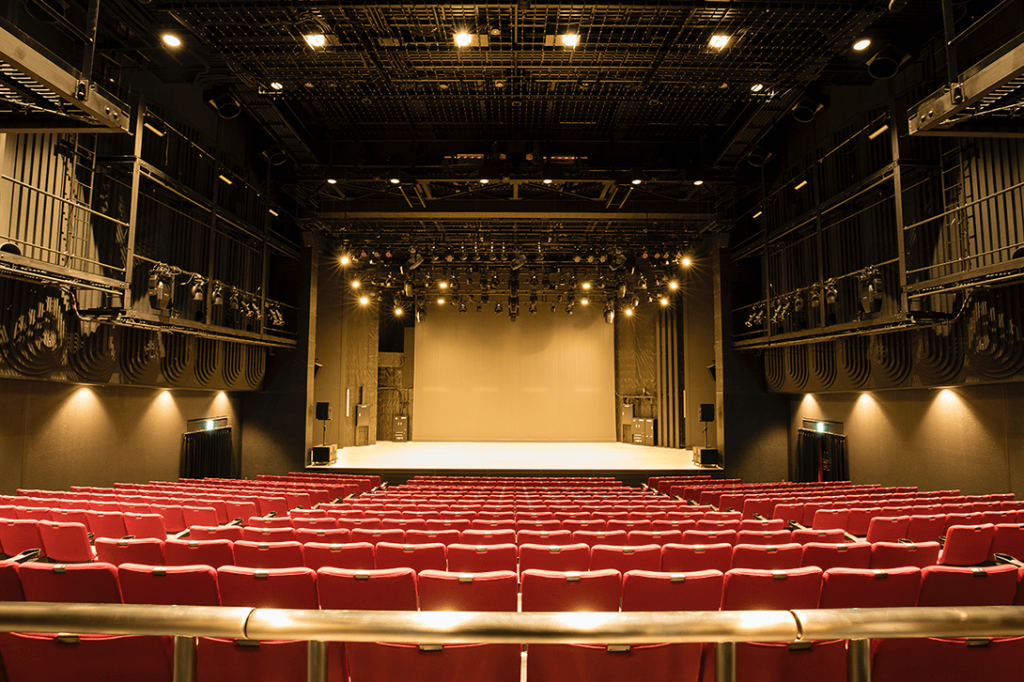Movie theaters are often where we go to see the extraordinary take place: dazzling special effects, actors transforming themselves before our eyes, and directors inspiring their cast and crew to bring their visions to life. Simply put, we often go to these spaces to escape, and to feel a true sense of freedom from the everyday.
It’s fitting, then, that Yurakucho’s new Alternative Theatre was a movie theater in its previous incarnation, because this theatrical venue is looking to bring that same sense of the extraordinary to its audiences.

Over the last nine months, what used to be a Toei Cinema has been remodeled into a 410-seat theater that will play home to a variety of shows. The space is equipped with a state-of-the-art sound system, a series of catwalks and wire stations that will allow performers to soar above the audiences, and 2,700 LEDs that will serve as a dramatic accompaniment to the action on stage.
There are also certain touches that harken back to the space’s Showa origins and to Yurakucho’s historical roots as Tokyo’s Broadway. As the elevator doors open onto the lobby, the first thing you see is the vintage, crystal-bedecked pillar. This is only one of the many vintage details that can be found around the theater, and they add to a feeling of comfort that is part of the Japanese tradition of omotenashi (making guests feel as comfortable as possible), which is one of the pillars of the Alternative Theatre experience.

Embracing the past while looking forward to the future is at the heart of Alternative Theatre’s mission, as Studio Alta president Kazutoshi Tanuma explains. The company has its roots in television production, but in developing the theater, they’ve had assistance from experienced hands at companies like the Theater Workshop and Mitsukoshi Party Management Company.
Studio Alta’s first show is the captivating multimedia production Alata, which brings together a variety of art forms – dance, swordplay, and pantomime – to create an unforgettable theatrical experience. With international audiences in mind, the entire show will be non-verbal, and rely on the skill and artistry of cast and crew to create performances that audiences from around the world will be able to appreciate and enjoy.
For the more distant future, Tanuma hopes to create more collaborative shows harnessing the skills and talents of performers from a wide variety of disciplines, but always with a focus on the non-verbal. Given their international focus, they also have a long-term goal of partnering with foreign promoters and bringing international talent to the Alternative Theatre.
But Tanuma isn’t satisfied with multidisciplinary theater that breaks boundaries while reaching audiences from around the world. He’s set an even higher bar for the fledgling theater: “Ultimately,” Tanuma says, “We want to bring about an entirely new kind of entertainment.”
 Behind the Scenes at the Opening Show: Alata
Behind the Scenes at the Opening Show: Alata
The opening day for Alata couldn’t be more fitting: July 7 is the most common day for celebrating Tanabata, a holiday that recognizes two celestial lovers, and is a time when magical things are known to happen.
The title character of the play is Alata, a shogun from the Sengoku period (1467–1603). In his own time, he was charged with the duty of protecting a princess from an evil spirit. Defeated on his mission, Alata finds himself magically transported to Tokyo and the year 2020. There, he meets Kokoro, a modern young woman with no fondness for old traditions. As Alata struggles to make his way in the modern era, he and Kokoro are pursued by the same spirit that sent Alata into the future.
One of the things that makes Alata unique is its ability to tell its tale entirely without words. Whether audiences are marveling at Alata’s intense swordplay, being moved by fast-paced dance routines, or looking up to see performers on wires zooming towards the stage, there’s no language barrier and audiences from around the world will be able to follow the story without missing a beat.
We were able to see part of a rehearsal for the show, and the stage positively crackles with energy as the characters brought the captivating story to life with dance, pantomime, and swordplay.

Stage rehearsal for Alata
The playwright behind Alata is Kensuke Yokouchi, who has penned works that range from Super Kabuki shows and large-scale plays to small, independent works. Together with director Shunichi Okamura, who has produced everyone from idol groups to kabuki actors, he has taken up the challenge of bringing a completely wordless work to dramatic life.
For a theatrical piece that uses no words, music plays a crucial role, which is where the group Mili comes into focus. The band came to international attention through the hit mobile music game Deemo, and all of Mili’s album releases have hit the number one spot on Japan’s indie music chart. Their music, which manages to evoke both traditional Japan and hyper modern Tokyo, is a perfect counterpoint to this tale of a time-transplanted samurai.
The two performers who will bring the lead characters to life are Elina and Yuko Saotome. Elina, who plays Kokoro, has starred on stage and screen, and has recently returned from a stint in New York, further developing her craft as a dancer. Yuki Saotome, her counterpart, made his stage debut with Japan’s leading theater troupe, Gekidan Sujaku, when he was one and a half years old. After years of performing in traditional Japanese theater, Saotome is now known as one of Japan’s quickest and most talented sword play performers.
And although the celestial lovers of Tanabata, Orihime and Hikoboshi, only get a day to spend with one another, audiences will be able to enjoy the adventures of Alata and Kokoro for many months to come. It’s a show that you don’t want to miss.
Alata hits the stage at Alternative Theatre from July 7. For address, website and ticket purchases, click here.
Sponsored Post


 Behind the Scenes at the Opening Show: Alata
Behind the Scenes at the Opening Show: Alata






